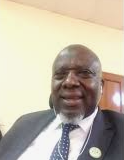Contribution of Madrasah System to the Development of Human Resource in Uganda and its Neighbouring Countries
DOI:
https://doi.org/10.53449/ije.v2i1.78Keywords:
madrasah system, human resource development, madrasah graduatesAbstract
Generally speaking, Muslims of Eastern Africa in general, and of Uganda in particular, lagged behind in education for a long period of time. This fact goes back to the time when Islam penetrated the East African coast. The interest of Arabs who introduced and taught Islam to the people of the coast was trade and many of them were neither trained nor did they possess any professional skills to propagate Islam. They did this job on a voluntary basis in anticipation of God’s reward. On the contrary, the Christian missionaries who came to the region were skilled, equipped and had been officially sent by various authorities to do the job of spreading Christianity. Therefore, when they arrived in the region, they embarked on building well equipped schools and all their activities were geared towards promoting Christianity among the whole population which scared Muslim parents from taking their children to these schools. Consequently, Muslim schools – mainly madrasah pl. madaris, were built to counter the force of missionary schools. These madaris, however, were not by any standards, comparable with the missionary schools. Unfortunately, this situation has continued to this day in some of the madaris due to numerous reasons, some of which are of the Muslims’ own making and which I believe could be avoided provided that the Muslims put their heads together. In spite of this fact, these schools have contributed highly to the development of human resource in Uganda and elsewhere, as highlighted in this paper. May Allah help me. Amiin.
Downloads
References
Lapidus, I. M. (1988). A history of Islamic societies. Cambridge: University Press.
Makdisi, G. (1990). The origin and development of the college in Islam and the West. In D. Hopwood (Ed.), Studies in Arab History: The Antonius lectures, 1978-1987 (pp 1-19). Oxford: Macmillan.
Merriam-Webster’s Collegiate Dictionary. (2003). (11th ed.). Springfield, MA: Merriam Webster.
Oded, A. (1974). Islam in Uganda: Islamization through a centralized state in pre-colonial Africa. New York, Toronto: John Wiley &Sons.
Pedersen, J., Makdisi, G., Rahman, M., & Hillenbrand, R. (2012). “Madrasa”. In P. Bearman, Th. Bianquis, C. E. Bosworth, E. van Donzel, & W. P. Heinrichs (Eds.), Encyclopedia of Islam (2nd ed.). Retrieved from
al-Qalqashandi >, A. b. ‘Ali. (1987). S}ubh al-A‘sha> fi> S{ina>‘at al-‘Insha>’ (vol.3). In M. H. Shams al-Din (Ed.)}. Beirut: Da>r al-Kutub al-‘Ilmiyyah.
Sinclair, J. M. (2001). Collins English Dictionary: 21st Century Edition. Glasgow: Harper Collins Publishers.
Soghayroun, I. Z. (1984). The Oman and South Arabian Muslim Factor in East Africa: The Role of the Zanzibari and Swahili Traders in the spread of Islam in Uganda Riyadh: Da>r al-‘ulu>m.
Tanga, M. S. (2003). The question of muslim stagnation in education: A Muslim riddle. Un-published paper presented at the Conference on The Global Worlds of the Swahili Intercultural Dialogue on the Indian Ocean in Zanzibar, February 20-23, 2003.
Trimingham, J. S. (1994). Islam in East Africa. Oxford: Clarendon Press.
Wehr, Hans. (1994). A Dictionary of Modern Written Arabic: (Arabic-Eng.) Ed. by J. Milton Cowan 4th edition, New York: Spoken Language Services with permission of Otto Harrassowitz, Wiesbaden, Germany.








